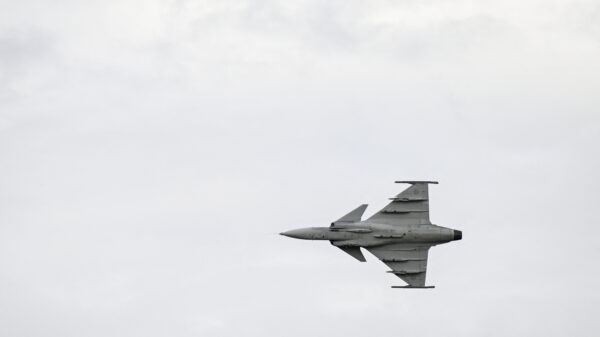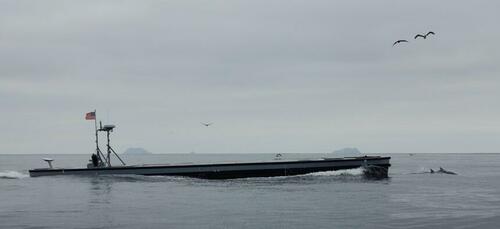The United States Marine Corps is testing a new unmanned vessel, the Sea Specter, designed to enhance logistical operations in potential conflicts, particularly with China. This initiative is part of the Autonomous Low-Profile Vessel (ALPV) program, which draws inspiration from low-profile submarines historically used by drug traffickers in Latin America. The II Marine Expeditionary Force is leading the testing of this innovative craft, produced by Gibbs & Cox, a subsidiary of Leidos, based in Reston, Virginia.
According to Jeff Bowles, chief engineering officer at Gibbs & Cox, while the design of the Sea Specter is inspired by narco subs, it significantly differs in engineering and safety. “Narco subs are dirty. They’re dangerous. They’re not engineered. But in principle, their mission is the same — move a large volume of cargo with the minimal chance of being observed by anyone else,” he stated in an interview with Defense One.
The Sea Specter, measuring 65 feet in length, has an above-water profile ranging from a couple of feet to mere inches. Its command and control system is developed by Sea Machines Robotics. With a sensor positioned 8 feet above the deck, the vessel can detect objects up to 7 miles away and transport up to 5 tons over a distance of 2,300 nautical miles at a speed of 8 knots. This range is particularly notable, as it covers the approximately 1,500-mile distance from the US logistical hub on Guam to the Philippines.
In a wartime scenario, Bowles suggested that deploying a dozen of these vessels could be advantageous, allowing for some to absorb attacks potentially from adversaries. “You might not be able to take something that’s a big, high-value target… to deliver re-supplies to the troops,” he explained, highlighting the importance of stealth in ensuring supply lines remain secure.
While the current focus is on logistics, the Sea Specter could serve multiple purposes. “This thing could loiter in a prescribed area for a very extended duration,” Bowles noted, indicating potential uses in intelligence gathering and surveillance, including monitoring for human trafficking or unauthorized incursions into U.S. territory.
The current version of the Sea Specter is constructed from wood, but Bowles indicated plans to transition to more durable materials, such as fiberglass, aluminum, or steel, to prepare for high-volume production.
As the Marine Corps explores these advanced logistics solutions, concerns also arise regarding military advancements in other nations. Particularly in China, there is growing apprehension about the development of humanoid robots designed to replace soldiers on the battlefield. This evolution raises ethical questions about the potential for autonomous machines to engage in indiscriminate violence.
The introduction of the Sea Specter represents a significant step for the United States Marine Corps in modernizing its logistics capabilities, reflecting a proactive approach to potential conflicts in the Indo-Pacific region.






































































